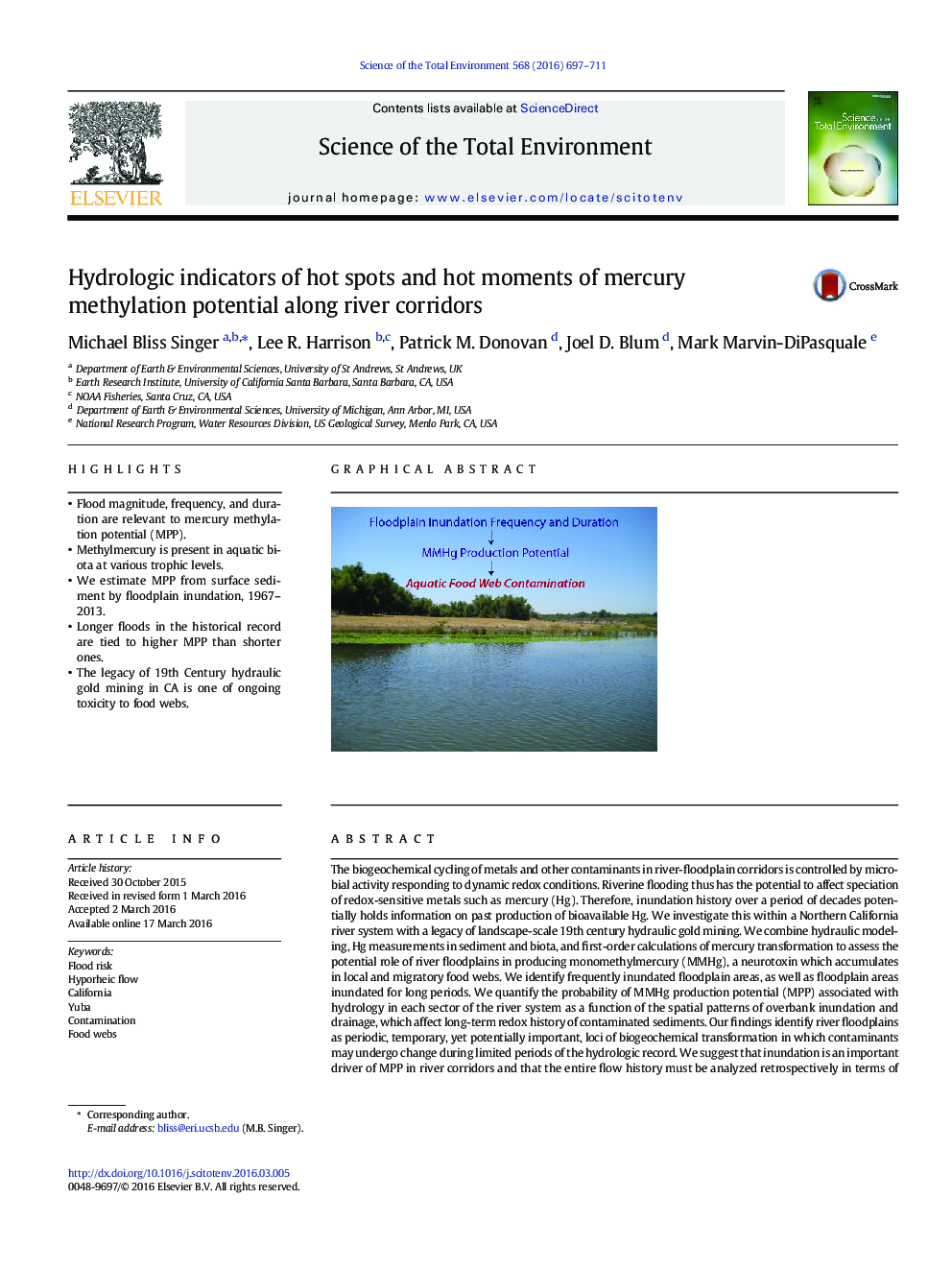| کد مقاله | کد نشریه | سال انتشار | مقاله انگلیسی | نسخه تمام متن |
|---|---|---|---|---|
| 6321194 | 1619722 | 2016 | 15 صفحه PDF | دانلود رایگان |
- Flood magnitude, frequency, and duration are relevant to mercury methylation potential (MPP).
- Methylmercury is present in aquatic biota at various trophic levels.
- We estimate MPP from surface sediment by floodplain inundation, 1967-2013.
- Longer floods in the historical record are tied to higher MPP than shorter ones.
- The legacy of 19th Century hydraulic gold mining in CA is one of ongoing toxicity to food webs.
The biogeochemical cycling of metals and other contaminants in river-floodplain corridors is controlled by microbial activity responding to dynamic redox conditions. Riverine flooding thus has the potential to affect speciation of redox-sensitive metals such as mercury (Hg). Therefore, inundation history over a period of decades potentially holds information on past production of bioavailable Hg. We investigate this within a Northern California river system with a legacy of landscape-scale 19th century hydraulic gold mining. We combine hydraulic modeling, Hg measurements in sediment and biota, and first-order calculations of mercury transformation to assess the potential role of river floodplains in producing monomethylmercury (MMHg), a neurotoxin which accumulates in local and migratory food webs. We identify frequently inundated floodplain areas, as well as floodplain areas inundated for long periods. We quantify the probability of MMHg production potential (MPP) associated with hydrology in each sector of the river system as a function of the spatial patterns of overbank inundation and drainage, which affect long-term redox history of contaminated sediments. Our findings identify river floodplains as periodic, temporary, yet potentially important, loci of biogeochemical transformation in which contaminants may undergo change during limited periods of the hydrologic record. We suggest that inundation is an important driver of MPP in river corridors and that the entire flow history must be analyzed retrospectively in terms of inundation magnitude and frequency in order to accurately assess biogeochemical risks, rather than merely highlighting the largest floods or low-flow periods. MMHg bioaccumulation within the aquatic food web in this system may pose a major risk to humans and waterfowl that eat migratory salmonids, which are being encouraged to come up these rivers to spawn. There is a long-term pattern of MPP under the current flow regime that is likely to be accentuated by increasingly common large floods with extended duration.
341
Journal: Science of The Total Environment - Volume 568, 15 October 2016, Pages 697-711
